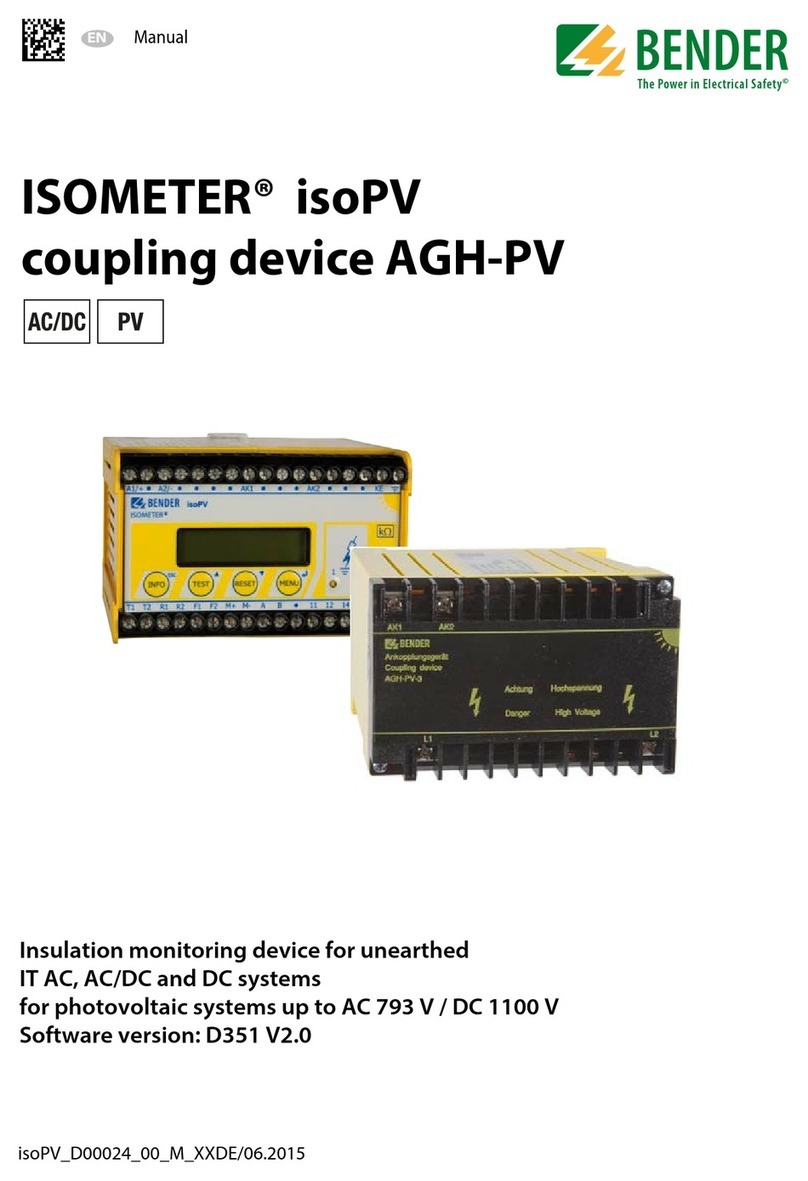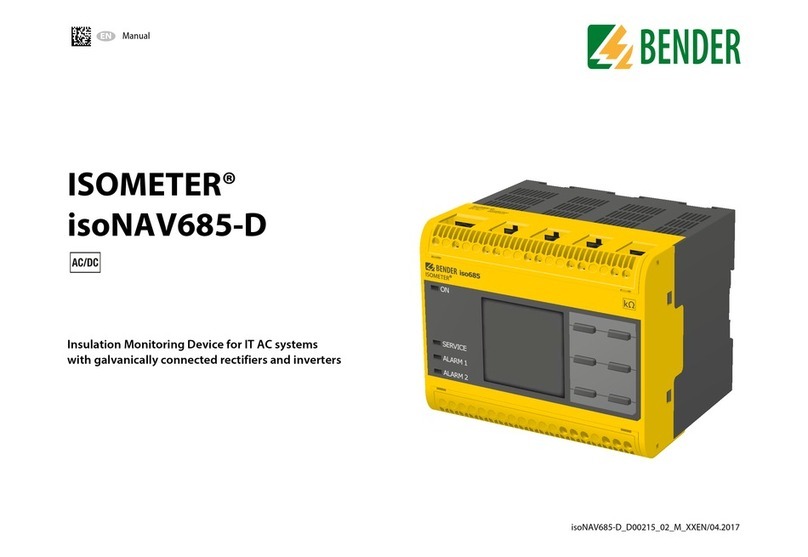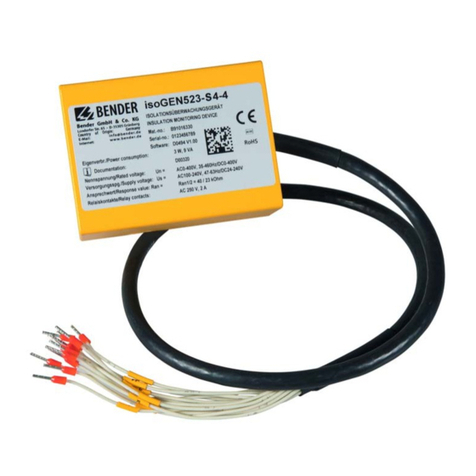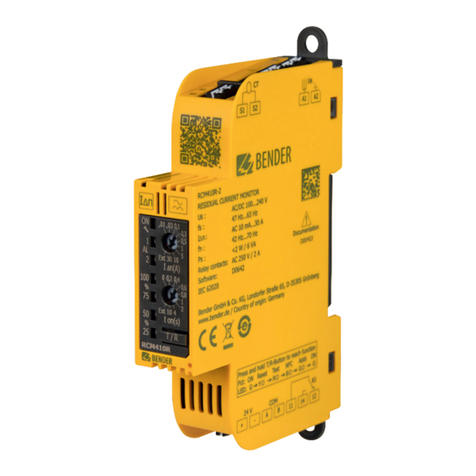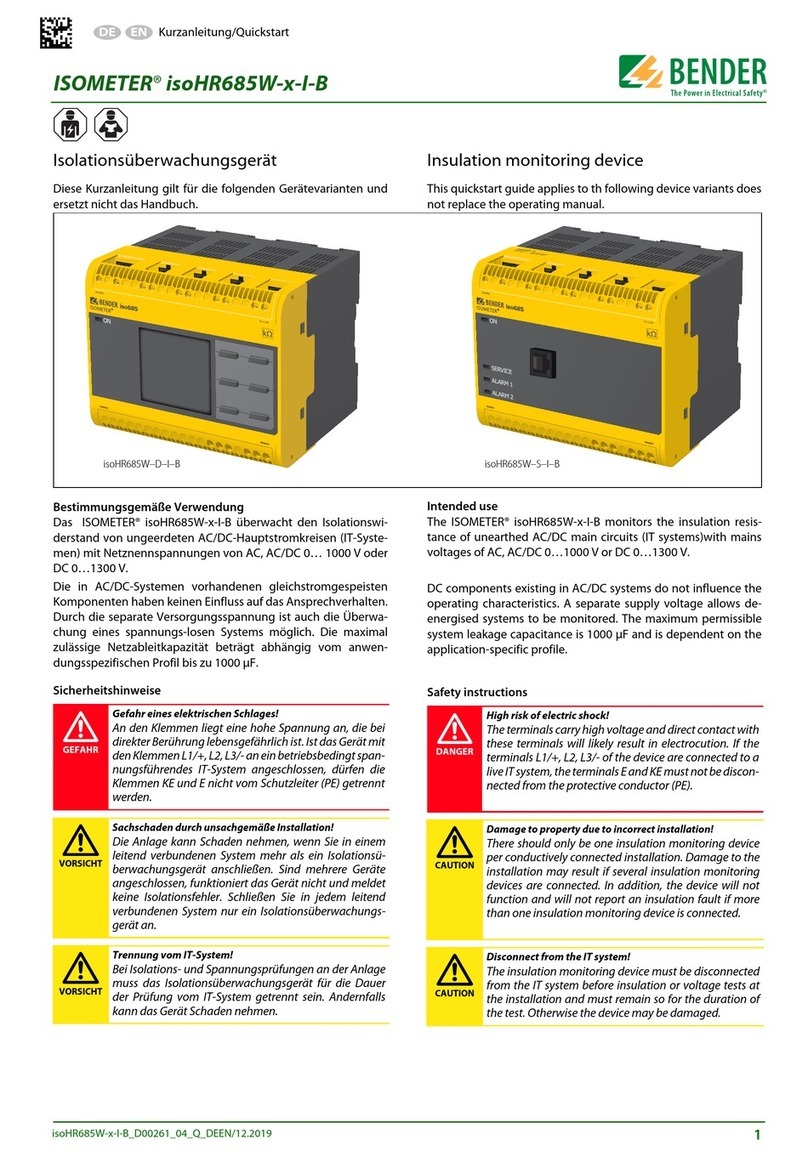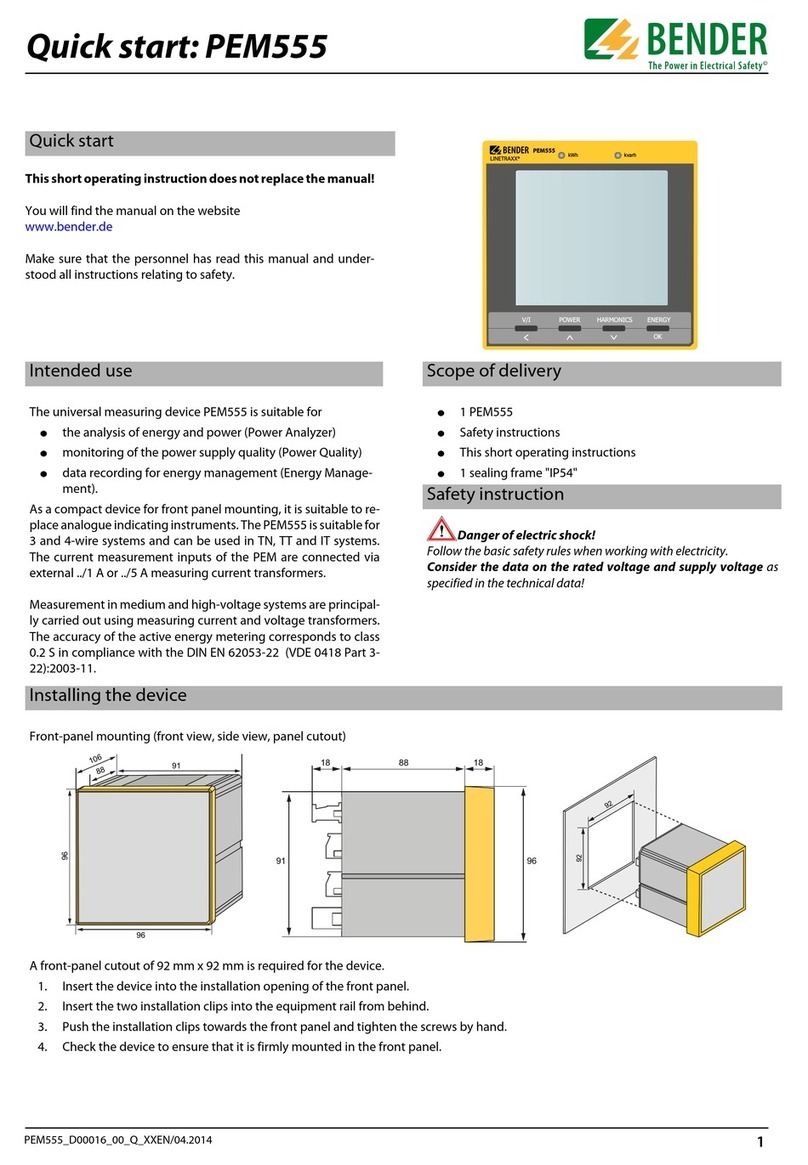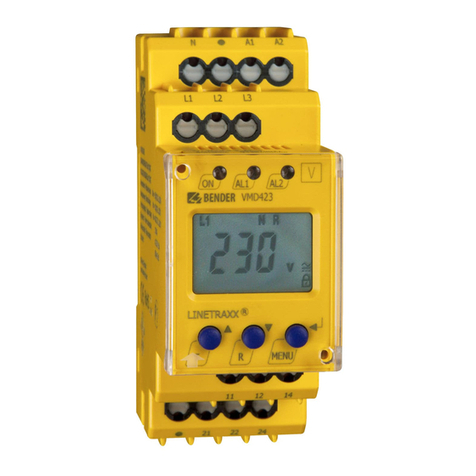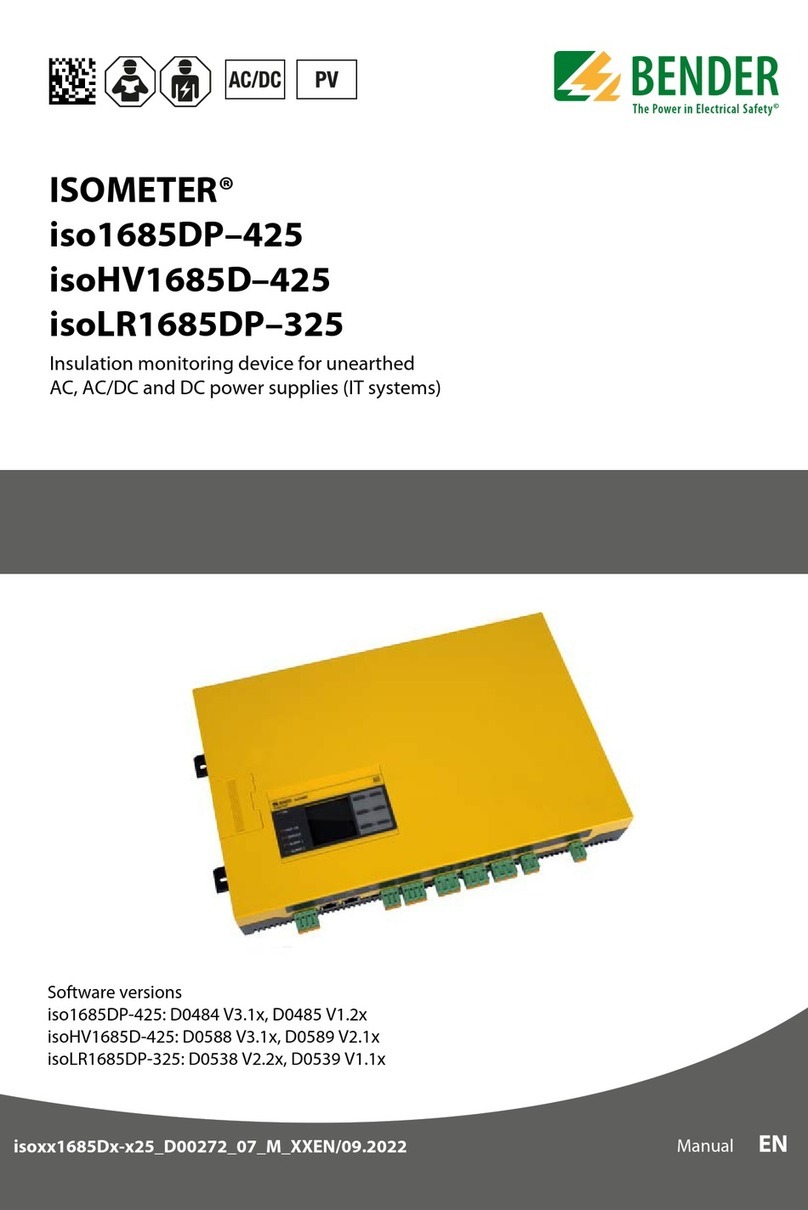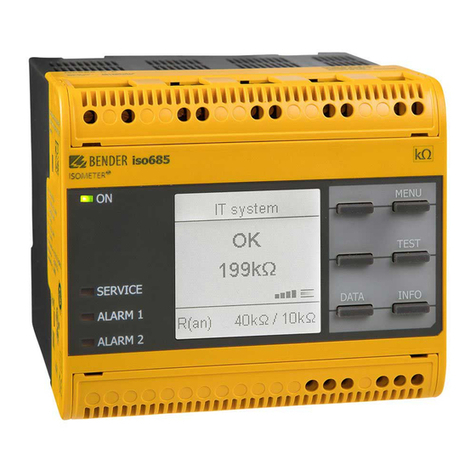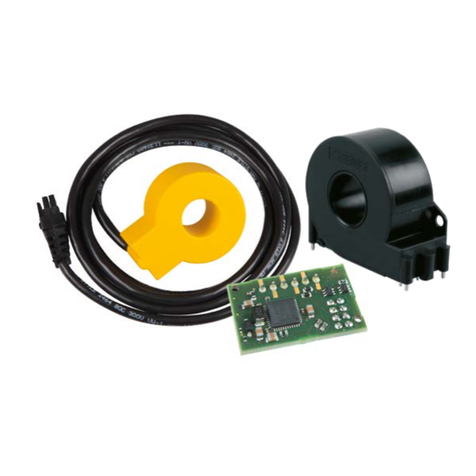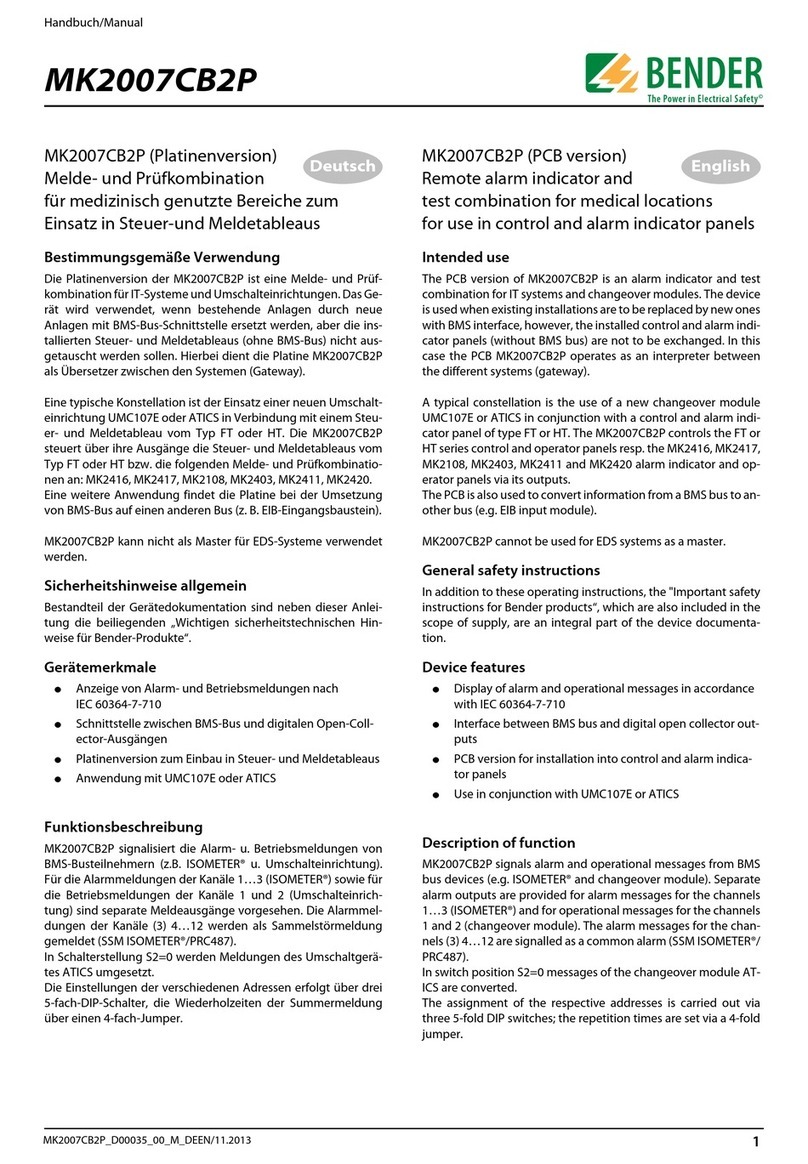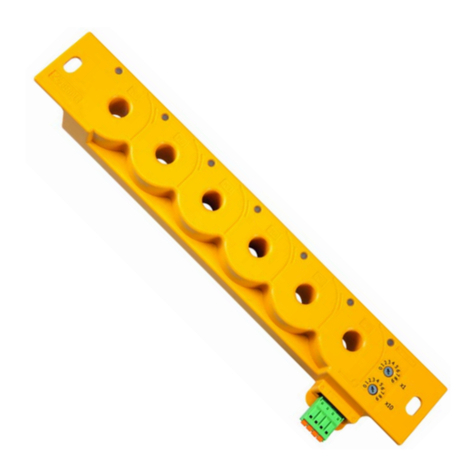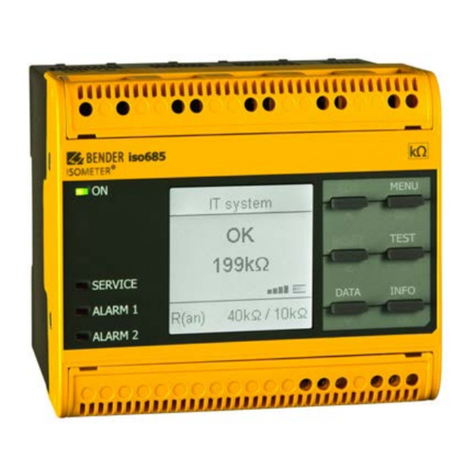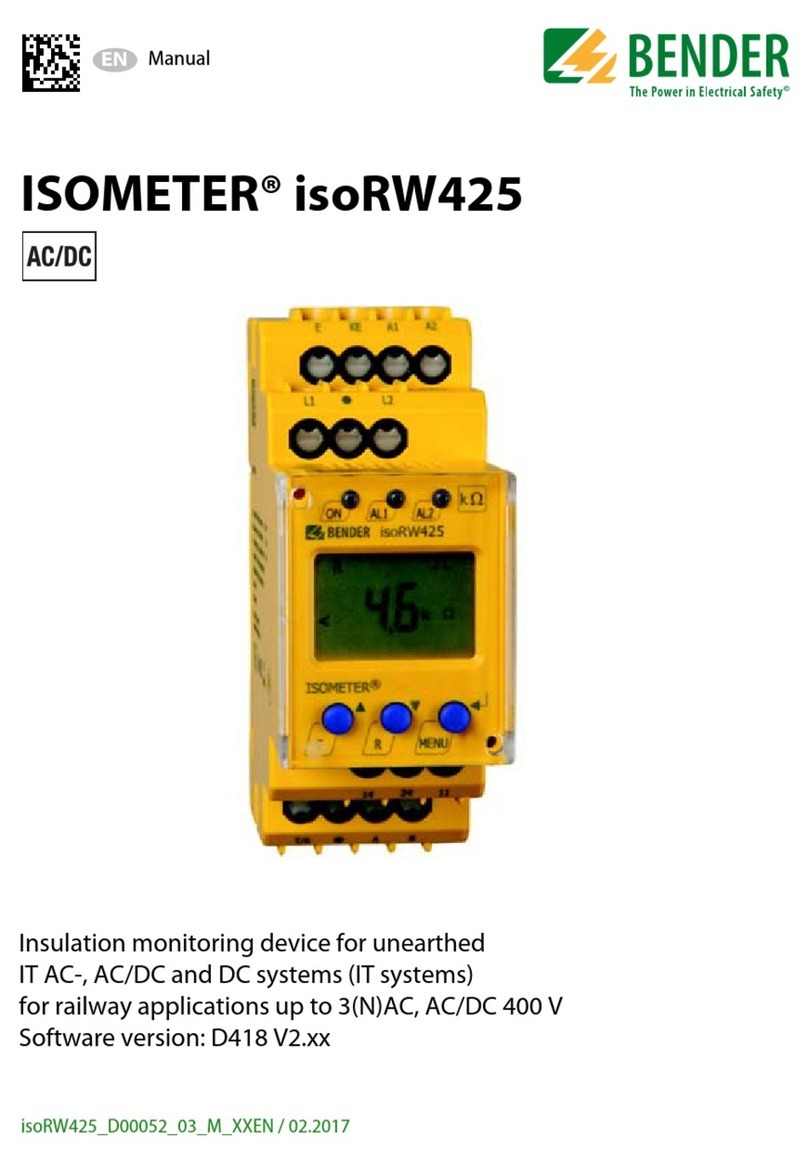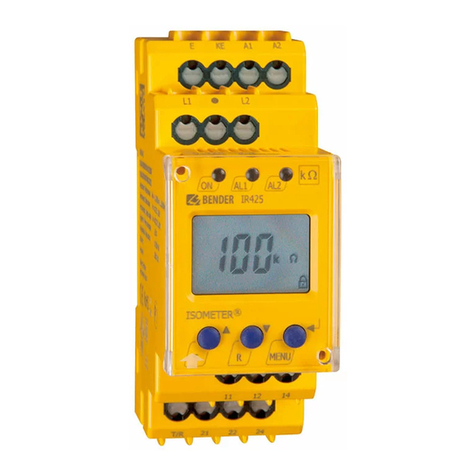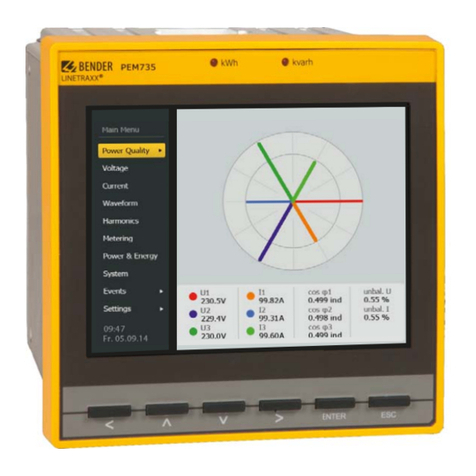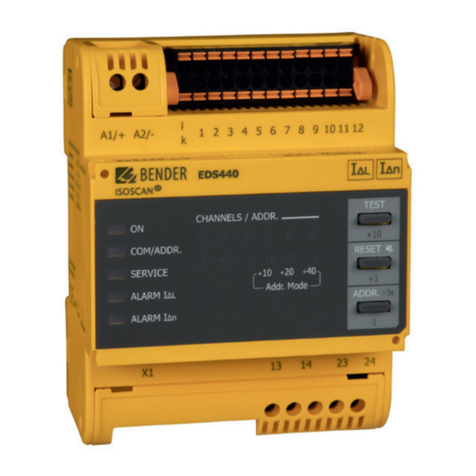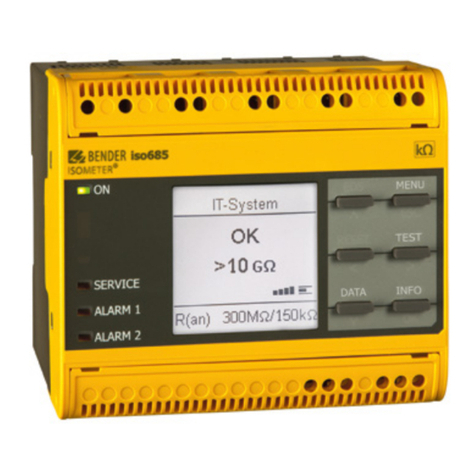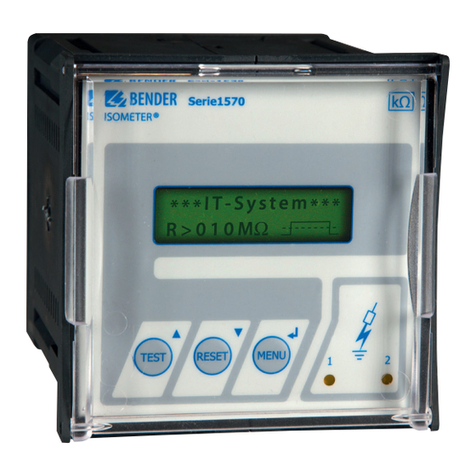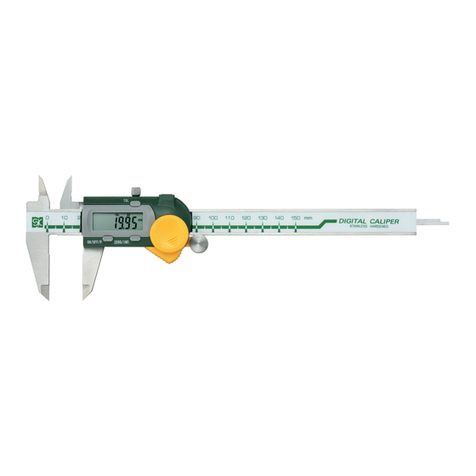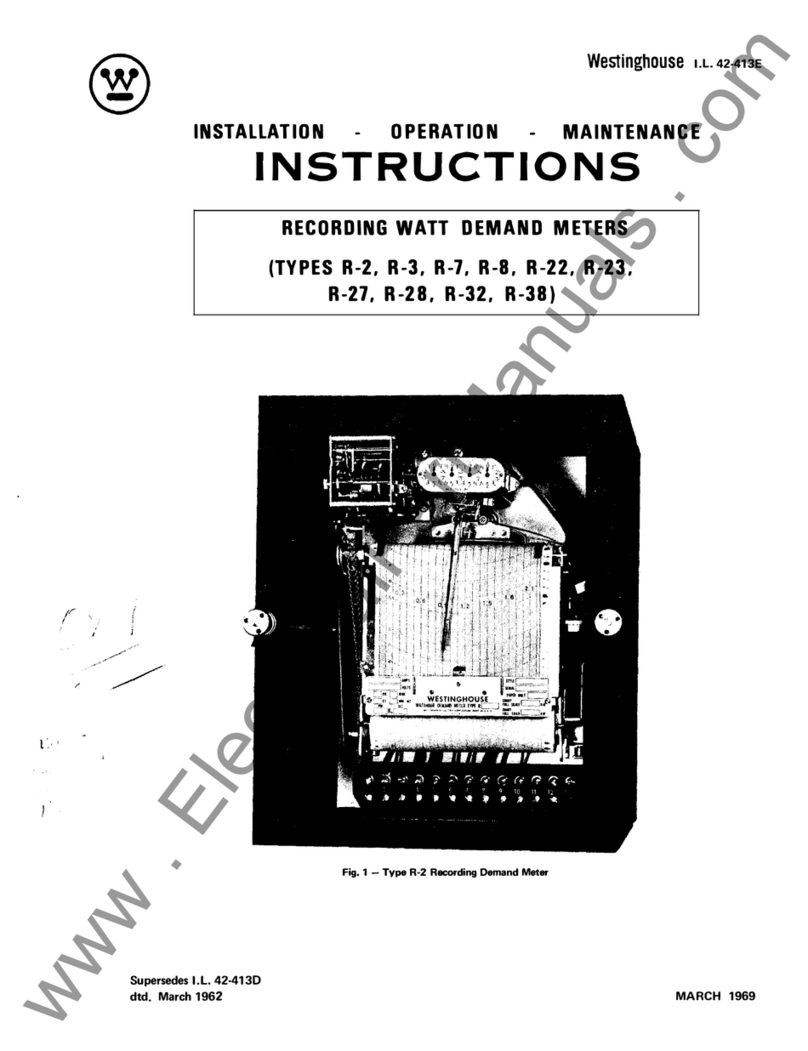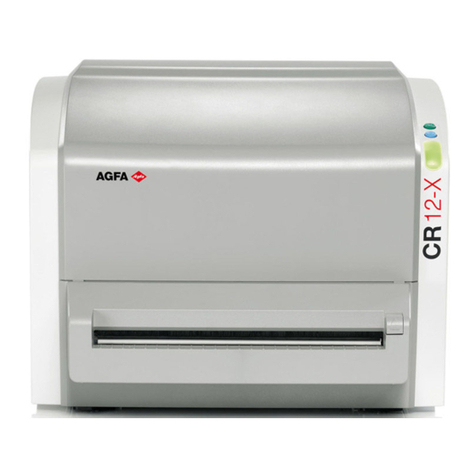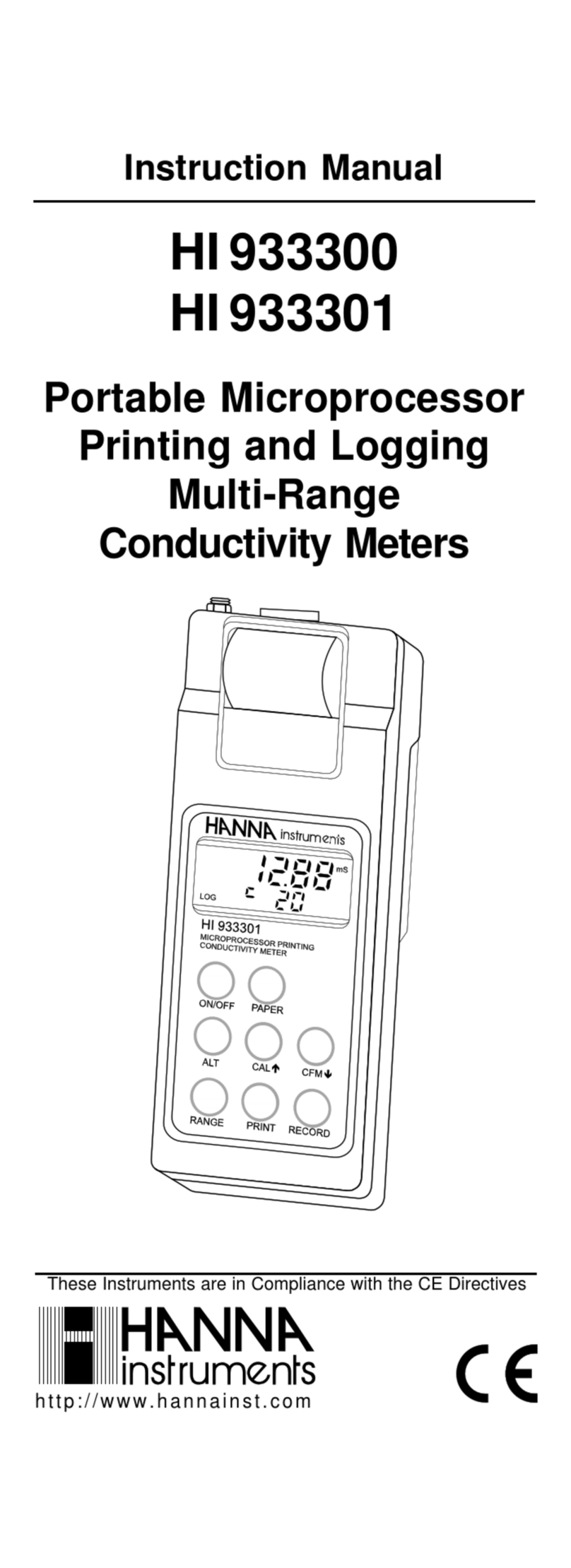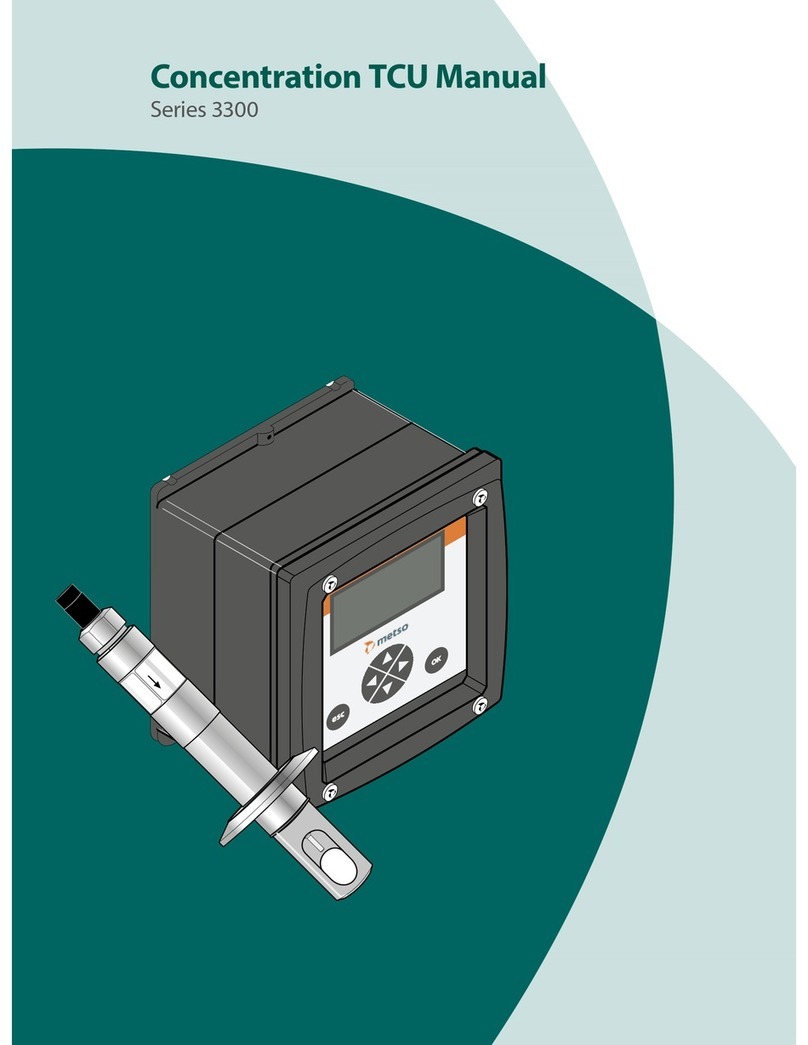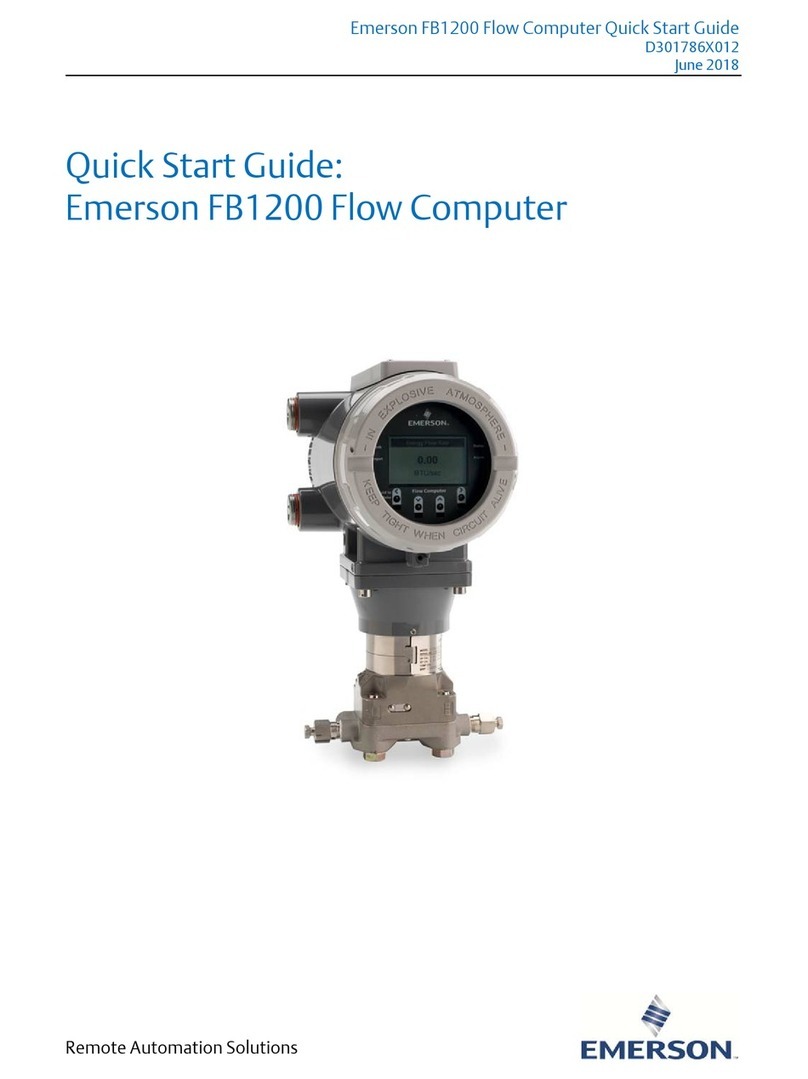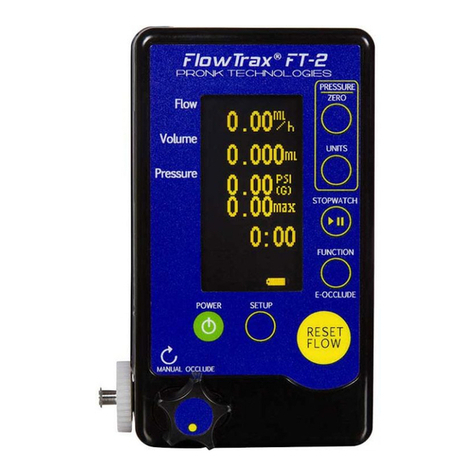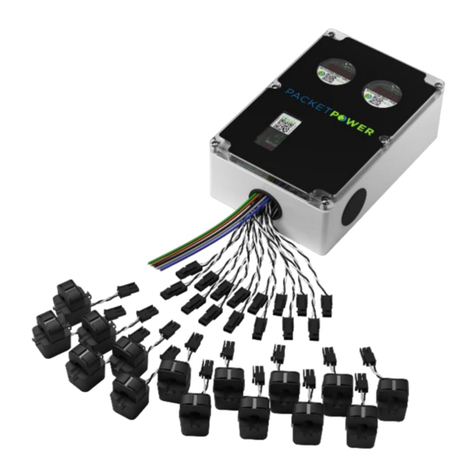
isoUG425_D00220_02_M_XXEN/05.2018
8
Function
3. Function
3.1 Device features
• Monitoring of the asymmetrical insulation resistance RFin unearthed DC systems
• Measurement of the nominal system voltage Un(True RMS and DC) with undervolt-
age and overvoltage detection
• Measurement of residual voltages system to earth (L+/PE and L-/PE)
• Configurable adaptation to the system leakage capacitance Ceup to 50 F
• Selectable start-up delay, response delay and delay on release
• Two separately adjustable response value ranges of 1...100 k (Alarm 1, Alarm 2)
• Alarm signalling via LEDs ("AL1", "AL2"), a display and alarm relays ("K1", "K2")
• N/C operation or N/O operation of the relays selectable
• Measured value indication via a multi-functional LC display
• Fault memory can be activated
• RS-485 interface (galvanically isolated) with the following protocols:
• BMS interface (Bender measuring device interface) for data exchange with other
Bender components
• Modbus RTU
• IsoData (for continuous data output)
• Password protection to prevent unauthorised parameter changes
3.2 Function description
The ISOMETER® measures, from a minimum nominal system voltage, the asymmetrical in-
sulation resistance RFbetween the system to be monitored (L+, L-) and earth (PE). The
RMS value and the DC value of the nominal system voltage Unbetween L+ and L- as well
as the residual voltages UL+e (between L+ and earth) and UL-e (between L- and earth) are
also measured.
It is possible to assign the detected fault or the faulty conductor to an alarm relay via the
menu. If the values RFor Unviolate the response values activated in the "AL" menu, this
will be indicated by the LEDs and relays "K1" and "K2" according to the signalling assign-
ment set in the "out" menu. In addition, the operation of the relay (n.c./n.o.) can be set
and the fault memory "M", activated.
If the values RFor Undo not violate their release value (response value plus hysteresis) for
the period toff without interruption, the alarm relays will switch back to their initial posi-
tion and the alarm LEDs "AL1"/"AL2" go out. If the fault memory is activated, the alarm re-
lays remain in alarm condition and the LEDs light until the reset button "R" is pressed or
the supply voltage is interrupted.
The device function can be tested using the test button "T". Parameters are assigned to
the device via the LCD and the control buttons on the front panel; this function can be
password-protected. Parameterisation is also possible via the BMS bus, for example by
using the BMS Ethernet gateway (COM460IP) or the Modbus RTU.
3.2.1 Monitoring the insulation resistance
The two parameters that monitor the insulation resistance, "R1" and "R2", can be found in
the response value menu "AL" (see table on Page 16). The value R1 can only be set higher
than the value R2. If the insulation resistance RFreaches or falls below the activated val-
ues R1 or R2, then this leads to an alarm message. If RFexceeds the values R1 or R2 plus
the hysteresis value (see table on Page 16), the alarm will be cleared.
3.2.2 Undervoltage/overvoltage monitoring
In the response value menu "AL" (Page 16), the parameters ("U <" and "U >") for monitor-
ing the nominal system voltage Uncan be activated or deactivated. The maximum und-
ervoltage value is limited by the overvoltage value.
The DC value of the system voltage is monitored. If the nominal system voltage Unreach-
es, falls below or exceeds the limit values ("U <" or "U >"), an alarm will be signalled. If the
maximum permissible system leakage capacitance Ceset for the ISOMETER® is exceeded,
an alarm will be triggered even if the overvoltage limit value has been deactivated. The
alarm will be deleted when the limit values plus the hysteresis (see Page 16) are no longer
violated.
3.2.3 Self test/error codes
The integrated self test function tests the function of the insulation monitoring device,
the connection to earth and the polarity of the nominal system voltage Un. The alarm re-
lays are not switched during the self test. This can be changed using the parameter "test"
in the signalling assignment (menu "out", Page 17). During the test, the display indicates
"tES".
When malfunctions are detected or connections are missing, the LEDs "ON"/"AL1"/"AL2"
flash. The respective error codes ("E.xx") will be indicated on the display and when factory
setting has been selected, relay "K2" switches.
The relays can be assigned to a device error with the parameter "Err" in the "out" menu in
the alarm assignment.




















